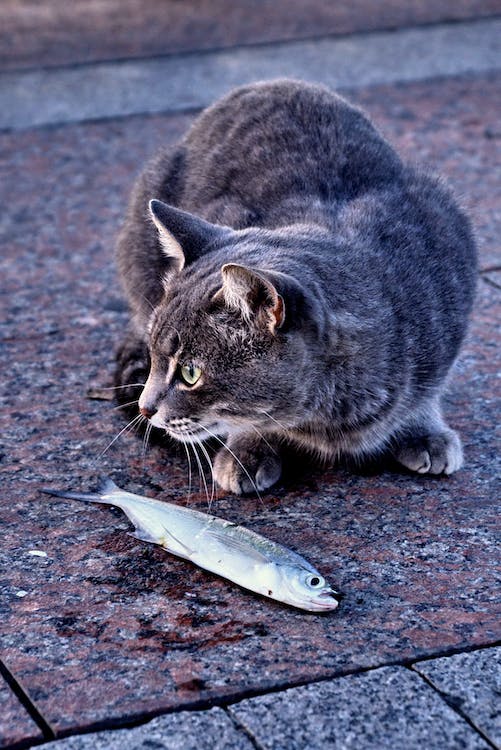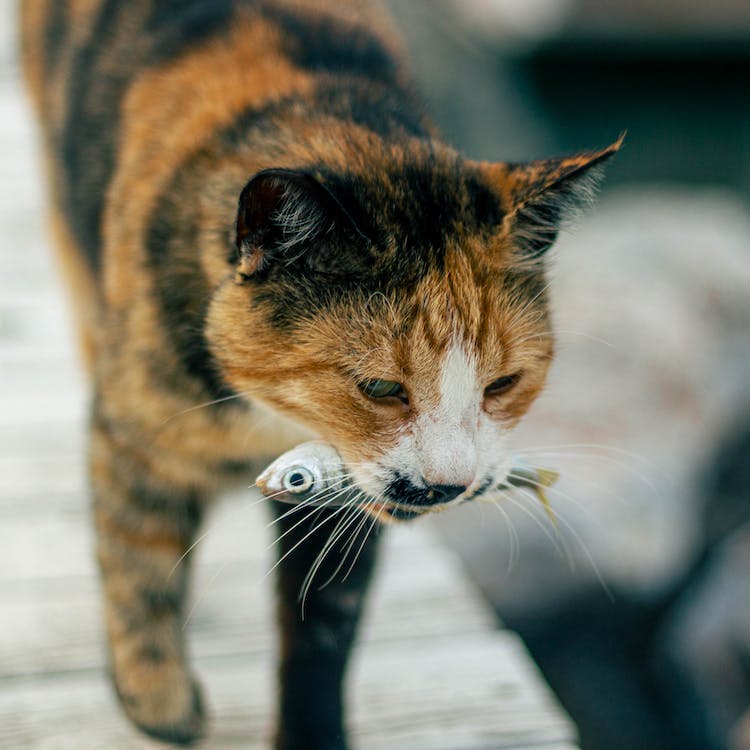
How Is Fish Important for Your Cat
Feeding fish to your cat can be interesting in certain nutritional aspects. On the other hand, when it comes to having cats and fish live together under the same roof, you have to ensure that their safety is preserved. Let’s look at the relationship between cats and fish in this article!
Cat and fish: fish in the cat’s diet
If you want to diversify your cat’s diet, introducing fish can be a solution. However, some important points must be considered to ensure a balanced diet.
The advantages of fish in the cat’s diet
In the wild, some cats catch and eat fish. Let’s see the main advantages for our little domestic felines: taste, protein, fat, taurine, and omega 3 and 6.
Taste
First of all, fish is a food very appreciated by the cat because of its taste, so it can be interesting to give it to cats who have difficulties eating their ration.
Protein
Fish flesh is a good source of animal proteins, and it can balance a diet (based on kibbles, for example) which would contain too many cereals.
Fats
A distinction is made between white-fleshed fish, which are less fatty, and colored-fleshed fish; however, they all contain oil, which is interesting from a nutritional standpoint. Note: Giving white fish to overweight cats and fatty fish to underweight cats is recommended.
Taurine
Most animals’ bodies produce an amino acid called taurine, crucial for organ function (such as the heart, eyes, and immune system).
Good to know: The cat’s body produces minimal taurine, so it supplements itself naturally, thanks to the animals it hunts. The intake of taurine through fish in the domestic cat can be a solution.
Omega 3 and 6
As with humans, omega 3 and 6 are essential for cats, and fish contain them in varying amounts.
Note: Cats are strictly carnivores, meaning their food should only consist of meat. Domestication has significantly changed this parameter to the point of causing a change in the digestive system of domestic cats compared to that of wild cats.
The disadvantages of fish in the cat’s diet
There are advantages to introducing fish into the cat’s diet but also disadvantages that are important to consider: salt, toxicity, and thiaminase.
Salt
The typical example of fish that should not be given to the cat (or only in exceptional cases) is canned tuna. Cats love them, but the salt content is too high and can lead to kidney or heart failure.
Toxicity
Raw fish flesh such as salmon, for example, can be toxic for cats, so it is strongly advised to cook them… or not to give them!
Thiaminase
The fish body contains an enzyme, thiaminase, which destroys vitamin B1 (called thiamine). A deficiency in vitamin B1 in cats leads to serious disorders such as loss of appetite, general weakening, hair and skin problems, and nervous disorders.
Good to know: introducing fish into your cat’s diet should not be taken lightly. It’s safe to feed fish once a week (e.g., small fillets of white fish), but don’t make it a daily meal. Talk to your veterinarian about a healthy diet for your cat.
Cohabitation between cats and fish
Let’s move on to the cohabitation between fish and cats. It is possible to welcome these two animals under your roof, but you must think about the safety of each one and the different risks: predation, intoxication, fall, and electrification.
The risk of predation

What could be more tempting for a cat than an aquarium, with its colorful fish always in motion, its plants moving with the current, and its little bubbles? On the one hand, the predation risk is high. On the other hand, the cat can spend hours stalking the fish without trying to catch them directly! No need to specify the intense stress permanently inflicted on the fish…
The risk of intoxication
Some cats get into the habit of drinking the water directly from the aquarium, which on the one hand, causes stress to the fish, and on the other hand, the products used for the maintenance of the aquarium can be harmful to the cat in the long term.
The risk of falling
Some very stubborn cats spend their time circling the aquarium, climbing on it, pawing at the walls, at the risk of dropping it if it is not very heavy, or falling into the water among the fish.
The risk of electrical shock
Water and electricity do not mix well; most aquariums have pumps, filters, and lighting. It’s easy to imagine the risk of a cat dipping its paws in the water or catching the fish near the aquarium’s power supply…
Good to know: to avoid all these points, you can take an aquarium with a lid, place it in a place inaccessible to the cat, and offer different drinking points, games, and occupations so that the cat’s attention is not permanently focused on the fish, or forbid the cat the room where the aquarium is located. And, of course, some cats are more attracted to fish than others, so you’ll need to observe the behavior of your little friend to adapt the safety rules to each case.





